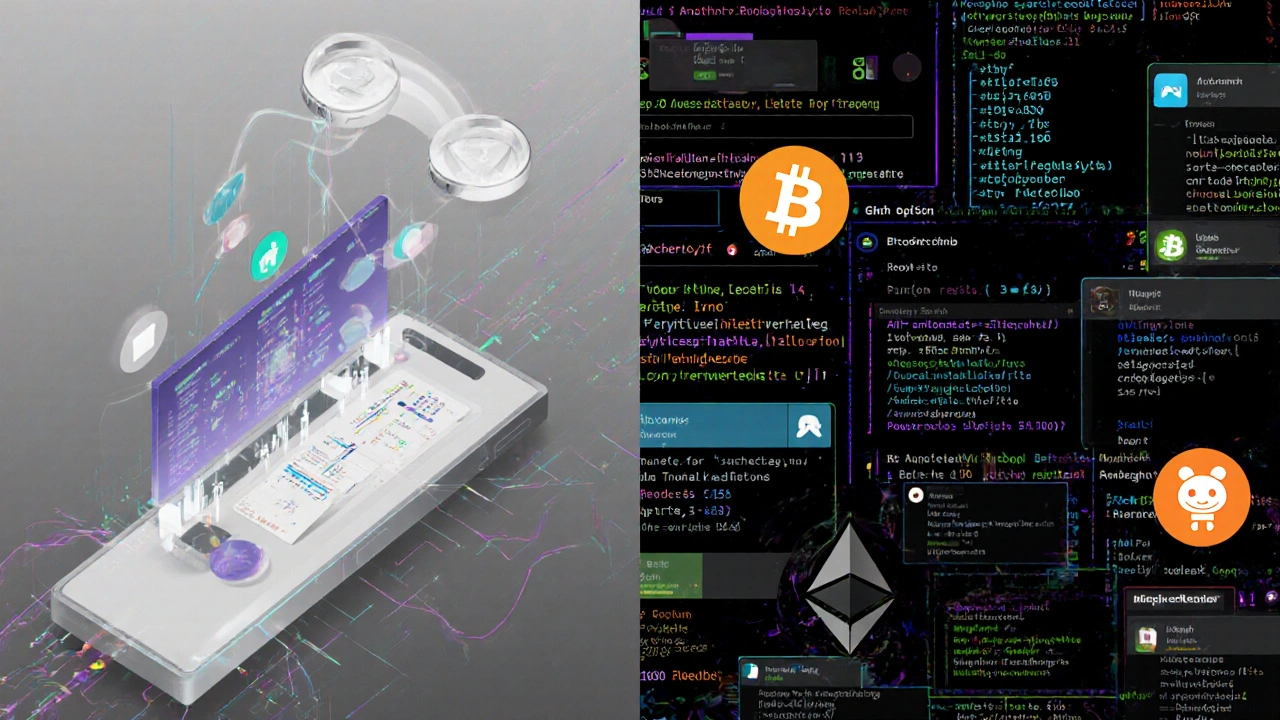When you think of Bitcoin or Ethereum, you probably think of the code, the wallets, or the price charts. But behind every major crypto project is something quieter - and just as important - called governance. It’s how decisions get made when no single company or CEO is in charge. How do you upgrade a blockchain? Who gets to vote? What happens when people disagree? That’s where crypto governance models come in.
What Is Crypto Governance?
Crypto governance is the system that lets a decentralized network make changes without a central authority. Think of it like a town meeting where everyone who owns a piece of the town gets to vote on new rules - like whether to pave a road, install streetlights, or change the speed limit. In crypto, those "towns" are blockchains, and the "rules" are software updates, fee structures, or even new features.
Unlike traditional companies where the CEO says what happens, crypto networks rely on participants - developers, miners, node operators, and token holders - to agree on changes. Without a clear way to make decisions, the network could split, stall, or lose trust. That’s why governance isn’t optional. It’s the backbone of sustainability.
On-Chain vs. Off-Chain Governance
There are two main ways crypto networks make decisions: on-chain and off-chain. They’re not better or worse - just different.
On-chain governance means voting happens directly on the blockchain. Token holders lock up their coins to vote on proposals. The results are automatically enforced by code. If 60% of voters approve a change, the network upgrades itself. No manual rollout needed.
Examples: Tezos, Decred, and Cosmos use on-chain systems. In Tezos, anyone who holds XTZ can propose changes. Others vote using their tokens. If a proposal passes, the upgrade is baked into the protocol automatically. It’s like having a self-driving car that reprograms itself based on passenger votes.
Off-chain governance is more like a discussion forum with informal votes. Proposals are debated on GitHub, Reddit, or Discord. Developers then decide whether to implement them. Voting isn’t coded into the blockchain - it’s done through community sentiment.
Bitcoin and Ethereum are classic off-chain examples. When Bitcoin needed to scale, the community argued for years over block size. Some wanted bigger blocks. Others feared centralization. No formal vote happened. Instead, developers and miners signaled support through software updates. Eventually, SegWit and the Lightning Network emerged as compromises. The process was messy, slow, and messy again - but it worked.
Who Gets to Vote?
Not everyone gets an equal say. Most systems use token-weighted voting: the more tokens you hold, the more voting power you have. That sounds fair - you’re putting skin in the game. But it also means whales (big holders) can dominate decisions.
In 2023, a proposal on the Polygon network changed its token distribution model. A single wallet holding 12% of the total supply voted yes. The proposal passed with 98% support - but only because 80% of voters held less than 0.1% each. The outcome was technically democratic, but practically controlled by a few.
Some projects try to fix this. DAOs like Aragon and Snapshot use quadratic voting, where your voting power increases slower than your token count. One token = 1 vote. Ten tokens = 10 votes. But 100 tokens = only 31 votes. That reduces the influence of large holders without banning them.
Other models give weight to activity. In MakerDAO, only those who’ve actively used the protocol in the last 30 days can vote. That stops people from buying tokens just to vote and then cashing out.

What Happens When People Can’t Agree?
Disagreements are normal. But in crypto, they can lead to forks - splits in the blockchain where one group keeps the old version and another moves to a new one.
The most famous example is Bitcoin Cash. In 2017, Bitcoin’s community couldn’t agree on how to scale. One side wanted larger blocks. The other preferred off-chain solutions. The result? Bitcoin Cash forked off with 8MB blocks. Both chains still exist today.
Forks aren’t always bad. They’re a safety valve. If a network becomes too rigid, a group can leave and build something better. Ethereum Classic is another fork - born from the DAO hack in 2016. One group wanted to reverse the hack. Another said code is law. Both sides kept their chains.
But forks cost money. They split developer attention. They confuse users. That’s why most projects try to avoid them. Good governance tries to build consensus before a split becomes inevitable.
Real-World Problems With Crypto Governance
It sounds ideal in theory - decentralized, transparent, democratic. But reality is messier.
- Low participation: In many DAOs, fewer than 5% of token holders vote. The rest are passive. That means a small group controls the outcome.
- Vote buying: Some wallets rent out their voting power. You can pay $5,000 to borrow 100,000 votes on some platforms. That turns governance into a marketplace.
- Centralized influence: Even in "decentralized" networks, a few teams or foundations hold most tokens. They can push proposals through quietly. Ethereum’s core developers have massive informal influence - not because they own the most ETH, but because they wrote the code.
- Slow execution: Off-chain systems can take months to decide. On-chain systems can be fast - but if a proposal fails, restarting the process takes time and energy.
Some projects are trying new fixes. Aave uses delegate voting - you can assign your vote to someone you trust, like a community leader or expert. That raises participation without forcing everyone to study every proposal.
Others use reputation systems. In Gitcoin, contributors earn points for writing code, reviewing docs, or helping users. Those points give voting weight - not tokens. That rewards contribution, not wealth.

What’s the Best Model?
There’s no perfect system. But some models work better for certain goals.
If you want speed and automation - go on-chain. Tezos upgraded its protocol 14 times between 2018 and 2023 without a single hard fork. That’s efficiency.
If you want stability and resistance to manipulation - off-chain might be better. Bitcoin’s slow, consensus-driven process has kept it secure for over 15 years.
Hybrid models are rising. Solana uses off-chain discussion for proposals, but requires on-chain voting to activate changes. That combines community input with technical enforcement.
For new projects, the smart move is to start simple. Use off-chain forums to build trust. Add on-chain voting only when you have enough active participants. Don’t rush into token voting if only 100 people hold your coin.
Why It Matters to You
Even if you don’t vote, governance affects you. If a network gets hacked and can’t upgrade its security, your assets are at risk. If a project can’t add new features, it becomes obsolete. If a community fractures, liquidity dries up and prices crash.
Understanding governance helps you choose which projects to trust. A crypto with no clear governance is like a car with no steering wheel. It might move - but you have no idea where it’s going.
Look at the history. Projects with strong governance - like Ethereum and Polkadot - have survived bear markets, hacks, and political drama. Projects with weak or ignored governance - like many low-cap tokens - vanish quietly.
Next time you invest in a crypto, ask: How are decisions made here? Who votes? How often? Is there a history of forks? That’s more important than the price chart.
How to Get Involved
You don’t need to be a coder or a whale to help shape crypto governance.
- Join the project’s Discord or forum. Read proposals before they vote.
- Use your tokens to vote - even if you hold a small amount. Your voice adds up.
- Delegate your vote to someone you trust - a community moderator, developer, or long-term holder.
- Build tools. Some people create dashboards that explain proposals in plain language. Others build bots that remind users to vote.
- Write feedback. Developers listen when users explain why a proposal is confusing or unfair.
Change doesn’t happen because one person votes. It happens because hundreds do - slowly, steadily, together.

